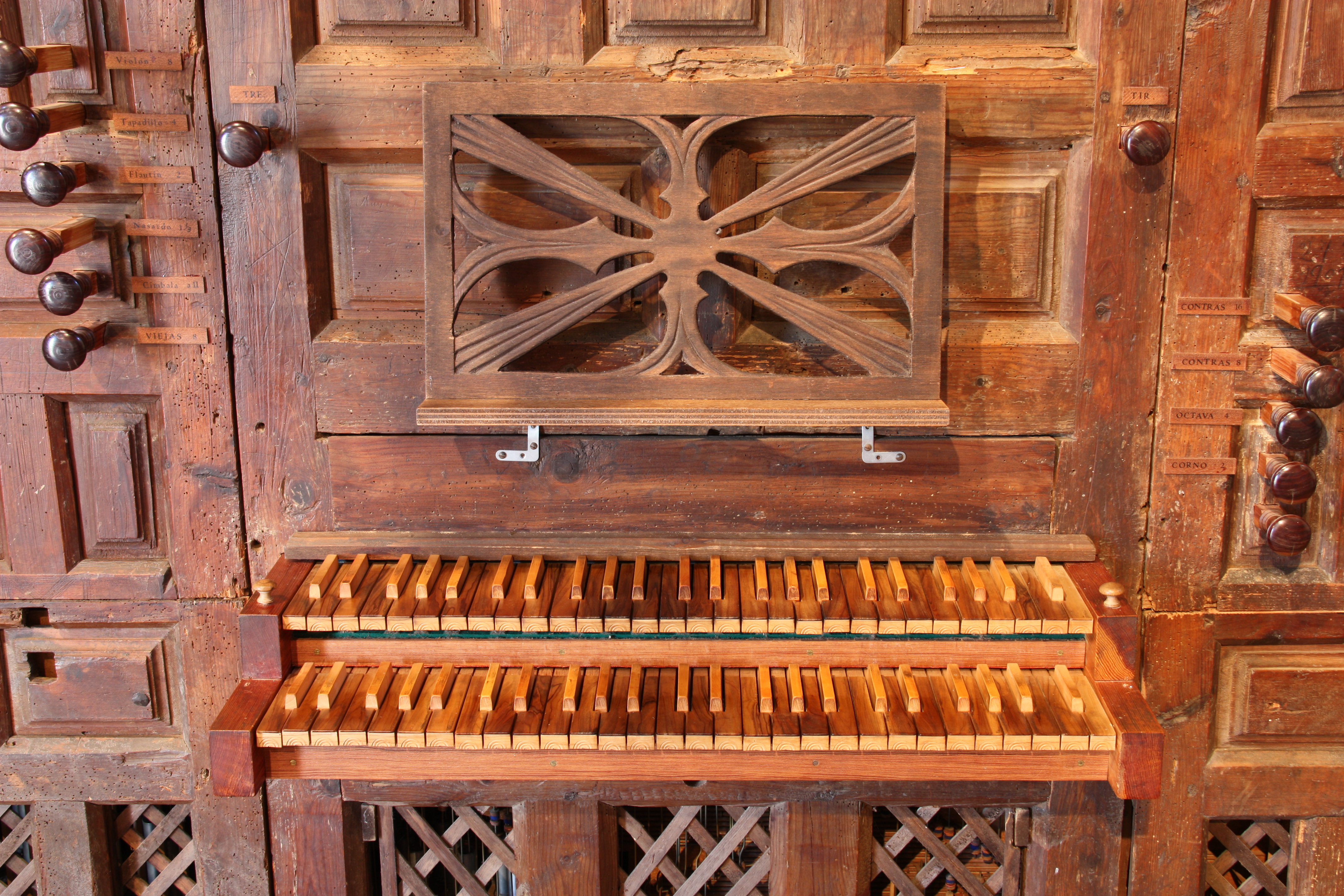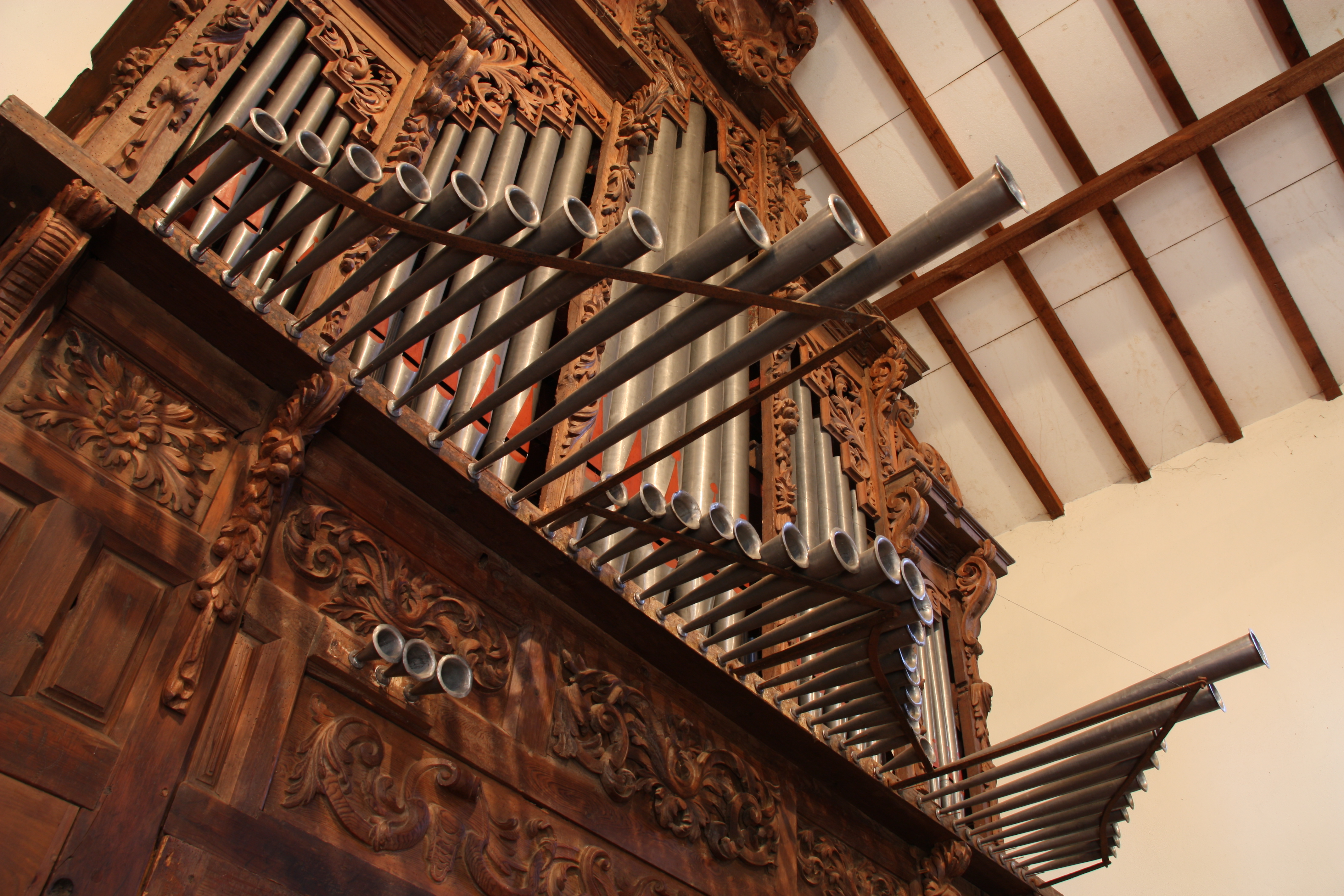Montpon Ménestérol, Castilian Organ
| Builder | G. Grenzing |
|---|---|
| Year | 1978 |
| Period/Style | Baroque |
| Stops | 18 |
| Keyboards | 2+P |
| Keyaction | tracker/mechanical |
| Tuning | Werckmeister III |
| Sampleset |
Available
 , sampled by
Sonus Paradisi
, sampled by
Sonus Paradisi
|
The Castilian organ, part of Francis Chapelet's collection at Montpon-Ménestérol, is a remarkable instrument with a storied past. Originating from a ruinous church in Castile, this organ was saved from potential destruction by Chapelet himself. In a fortuitous turn of events, Chapelet purchased the organ and moved it just a week before the church's vault collapsed, leaving only the front pipes and one of the windchests intact.
The front of the organ, adorned with intricate carvings, bears the date 1736, indicating its historical significance. Gerhard Grenzing, a renowned organ builder, restored the instrument in 1978. During the restoration, Grenzing also expanded the organ to enhance its capabilities and allow for a broader repertoire, thus preserving its historical essence while making it suitable for modern performances.
The Castilian organ now features two manuals with a chromatic compass and a full pedal board with 30 keys. This setup provides a wide range of tonal possibilities and enables the performance of complex pieces. The restoration maintained the instrument’s historical character while integrating modern functionality, making it a versatile and valuable addition to Chapelet’s collection.
The Castilian organ’s preservation and continued use underscore the dedication to maintaining and celebrating historical musical instruments. Its rich history, combined with modern enhancements, makes it a testament to the enduring legacy of Spanish organ craftsmanship and a cherished piece of Chapelet’s collection.
The front of the organ, adorned with intricate carvings, bears the date 1736, indicating its historical significance. Gerhard Grenzing, a renowned organ builder, restored the instrument in 1978. During the restoration, Grenzing also expanded the organ to enhance its capabilities and allow for a broader repertoire, thus preserving its historical essence while making it suitable for modern performances.
The Castilian organ now features two manuals with a chromatic compass and a full pedal board with 30 keys. This setup provides a wide range of tonal possibilities and enables the performance of complex pieces. The restoration maintained the instrument’s historical character while integrating modern functionality, making it a versatile and valuable addition to Chapelet’s collection.
The Castilian organ’s preservation and continued use underscore the dedication to maintaining and celebrating historical musical instruments. Its rich history, combined with modern enhancements, makes it a testament to the enduring legacy of Spanish organ craftsmanship and a cherished piece of Chapelet’s collection.
| Positiv | Great | Pedal |
|---|---|---|
| Violon 8' | Flautado 8' | Contras 16' |
| Tapadillo 4' | Octava 4' | Contras 8' |
| Flautin 2' | Docena 2 2/3' | Octava 4' |
| Nasardo 1 1/3' | Quincena 2' | Corno 2' |
| Cimbala II | Nasardo 1 3/5' | |
| Viejas 8' | Lleno III | |
| Trompeta 8' | ||
| Clarin 4'/8' |
1596209804-Pasquini-Partite sopra la Aria-Castilian
0:00
0:00
1596209619-Bach-Wer nur-BWV691-Castilian
0:00
0:00
1596209524-Cruz-Verso de 8.tom-Castilian
0:00
0:00
https://www.sonusparadisi.cz/en/organs/spain/chapelet-spanish-collection.html
 Pipe Organ Map
Pipe Organ Map



